Best Galbi Jjim (Korean Braised Short Ribs)
Galbi Jjim is a beloved Korean dish made by braising beef short ribs until they turn fall-off-the-bone tender in a savory-sweet sauce. Simmered with vegetables, it becomes a comforting dish often reserved for celebrations. This recipe guides you through making Galbi Jjim at home with authentic flavors and a richly satisfying taste worthy of any holiday table.

Galbi Jjim (갈비찜) is one of those dishes that makes the table feel special the moment it appears. Growing up, my mom only made these Korean braised short ribs for birthdays, Chuseok, or Seollal, since beef ribs were considered too expensive for everyday meals. To me, Galbi Jjim has always meant celebration and family gatherings.
The short ribs are slowly braised until tender in a glossy sauce made with soy, garlic, and the natural sweetness of Korean pear. Some people experiment with different cooking methods, but I always return to traditional slow braising. It creates that rich, fall-off-the-bone texture and deep gravy that no shortcut can truly replace.
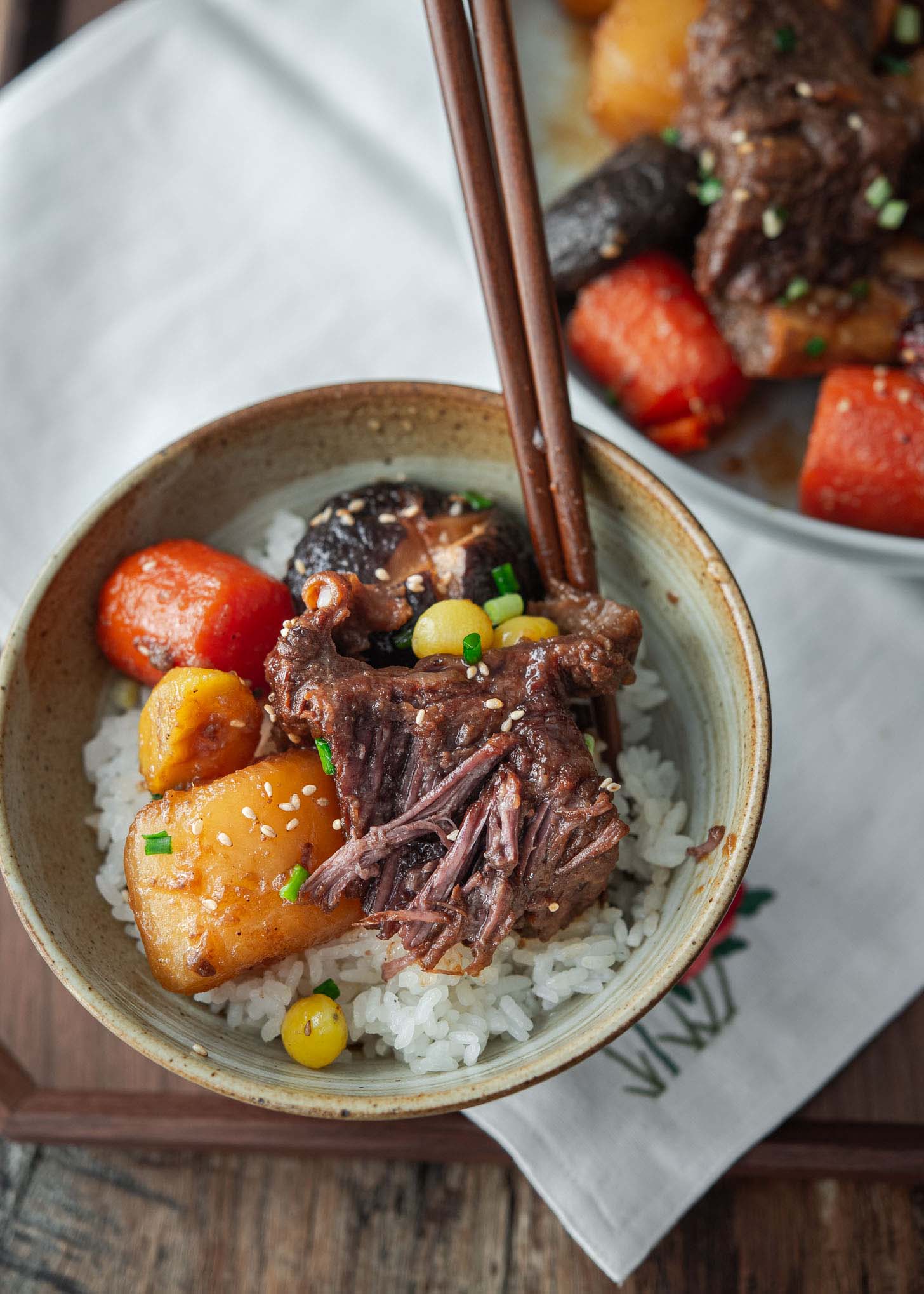
This recipe stays close to tradition, with a few of my own touches that make it one of the best Galbi Jjim versions you’ll try. Serve it with rice, kimchi, and a few simple side dishes, and you’ll have a holiday-worthy Korean meal at home.
Many people confuse Galbi Jjim with Galbitang (갈비탕), another beef rib dish. Galbitang is a clear, savory soup often served at weddings, while Galbi Jjim is a saucy, festive braise made for holidays and celebrations.
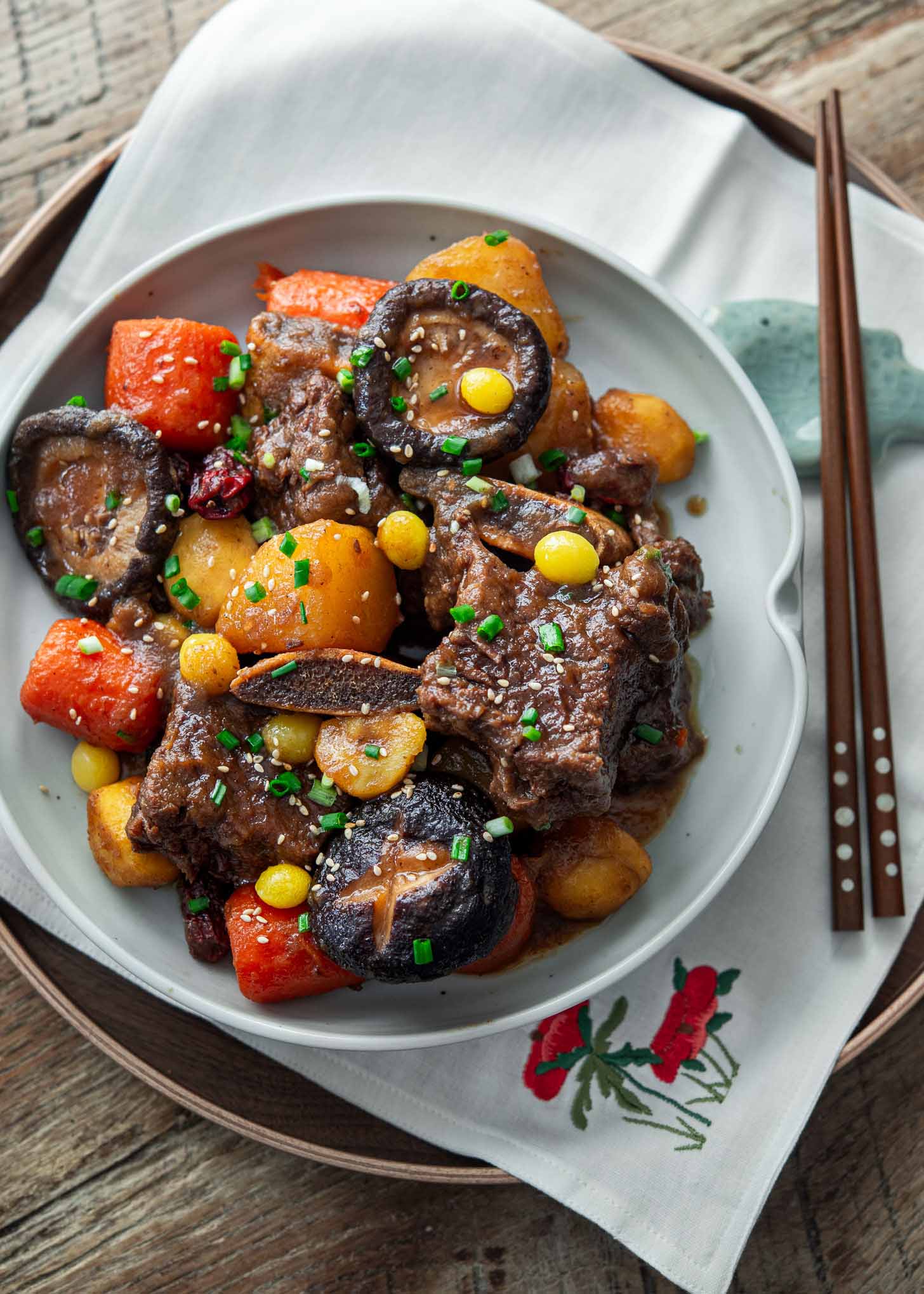
My Tested Method for the Best Galbi Jjim
No soaking the ribs – Many traditional recipes call for soaking short ribs in water to “remove blood.” With modern butchering, that step isn’t needed and actually washes away natural beef flavor. Instead, I use a quick parboil at the beginning to remove impurities and excess fat. This way, the ribs stay clean but still taste deeply rich.
Quick sea kelp stock – Instead of plain water, I simmer a piece of dried kelp for just a few minutes. This easy step builds a clean umami base that makes the braising sauce taste deeper and more balanced.
Dutch oven braising – I tested this recipe in the slow cooker, Instant Pot, and stovetop. The Dutch oven wins every time. It gives the sauce body, keeps the ribs juicy, and allows you to add vegetables at just the right time so they don’t turn mushy.
Authentic with flexible add-ins – The recipe follows the traditional holiday style I grew up with, but I also show you optional ingredients like chestnuts, jujubes, and ginkgo nuts if you want to make it truly festive.
Proven family recipe – This is the version I make for my own family today, blending the taste of my mother’s cooking with small tweaks I’ve learned over years of testing.
Key Ingredients You’ll Need
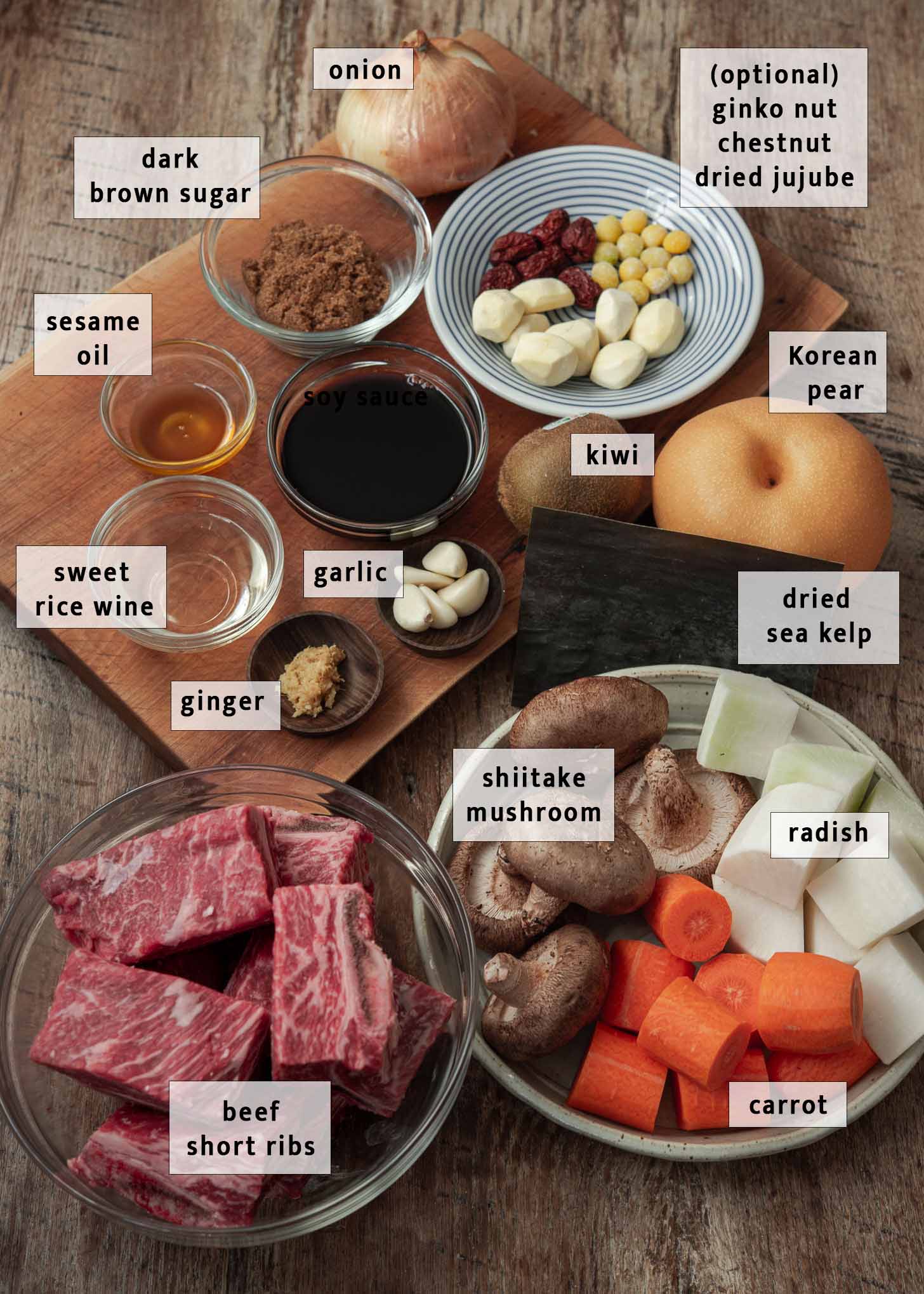
- Beef short ribs: Use Korean-style cross-cut short ribs, which are sliced across the bone into thick, chunky pieces. This cut is different from the thin flanken cut used for LA Galbi (Korean BBQ short ribs), and it’s made specifically for braising. The bone helps lock in flavor, and the meat turns fall-off-the-bone tender as it cooks. When shopping, look for well-marbled pieces with the round “bone eye” at the base of each rib.
- Korean pear (or Asian pear) and kiwi: These fruits naturally tenderize the meat while adding a subtle sweetness. If unavailable, a crisp apple such as Fuji or Bosc pear works well.
- Korean radish: Preferred over daikon because it holds its shape better during braising and soaks up flavor without turning mushy.
- Sea kelp stock: A quick umami-rich broth made by simmering dried kelp (dashima) in water for 5 minutes. This small step deepens the flavor of the sauce far more than plain water.
- Optional festive add-ins: Add dried jujubes, chestnuts, and ginkgo nuts for a holiday version of Galbi Jjim. These ingredients create a special-occasion feel, but you can skip them and still enjoy a delicious dish.
How to make Galbi Jjim (Step-by-Step)
Here’s a step-by-step visual guide to making Galbi Jjim at home. The photos will walk you through the process, and you can find exact measurements and detailed instructions in the recipe card below.
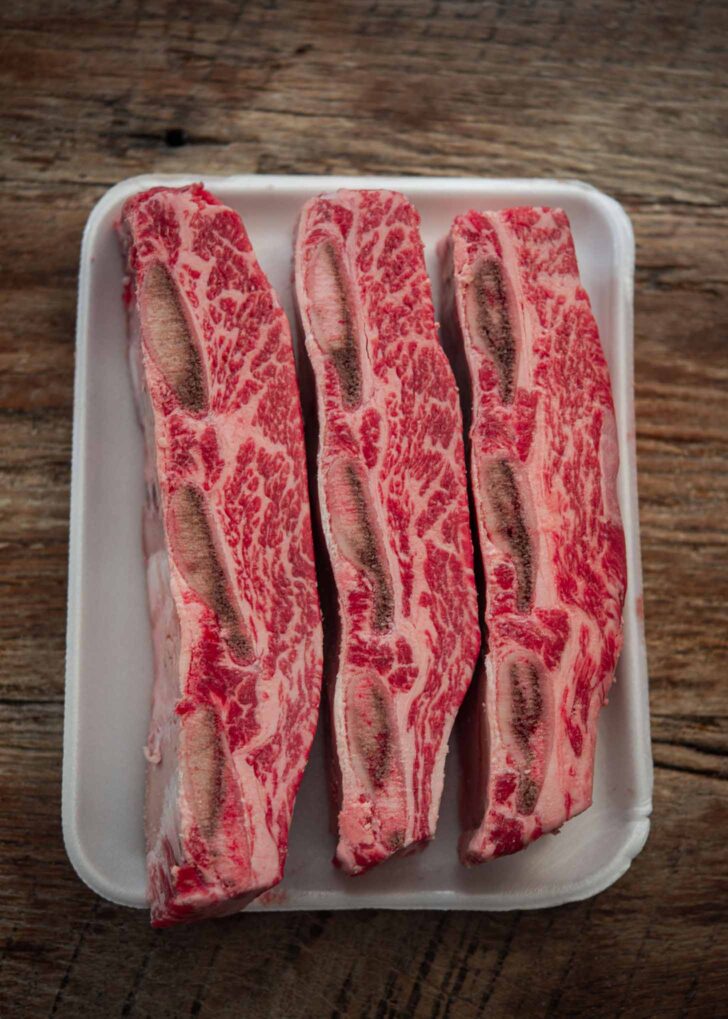
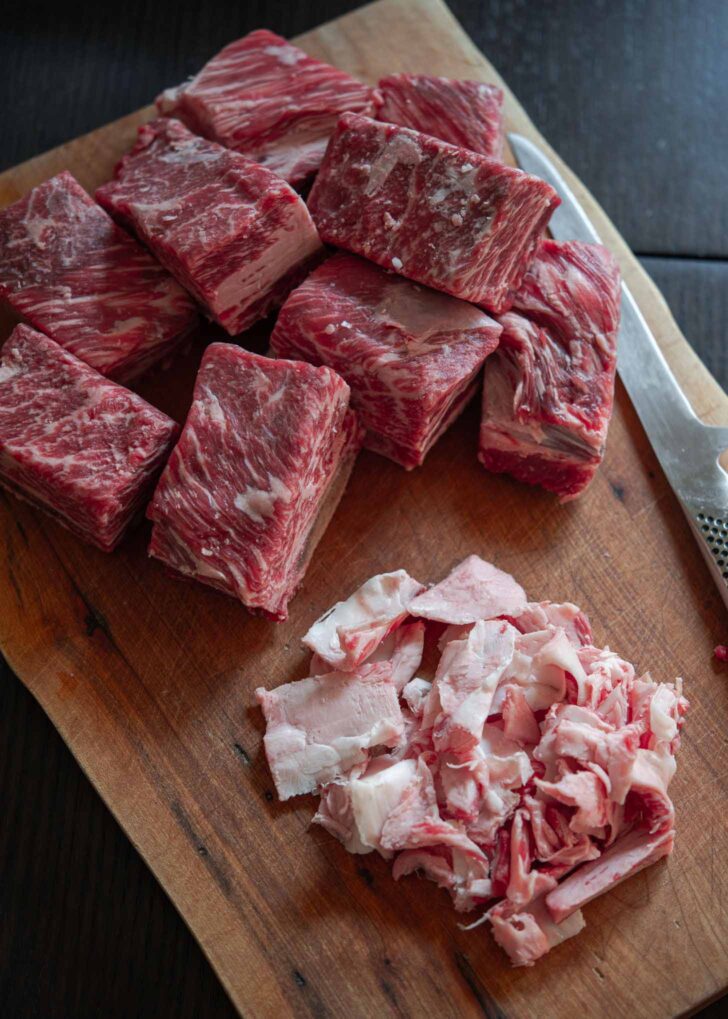
Prep the ribs first. If your short ribs come uncut, slice them into individual segments with one bone attached. Trim away excess fat and the tough ligament along the bone.
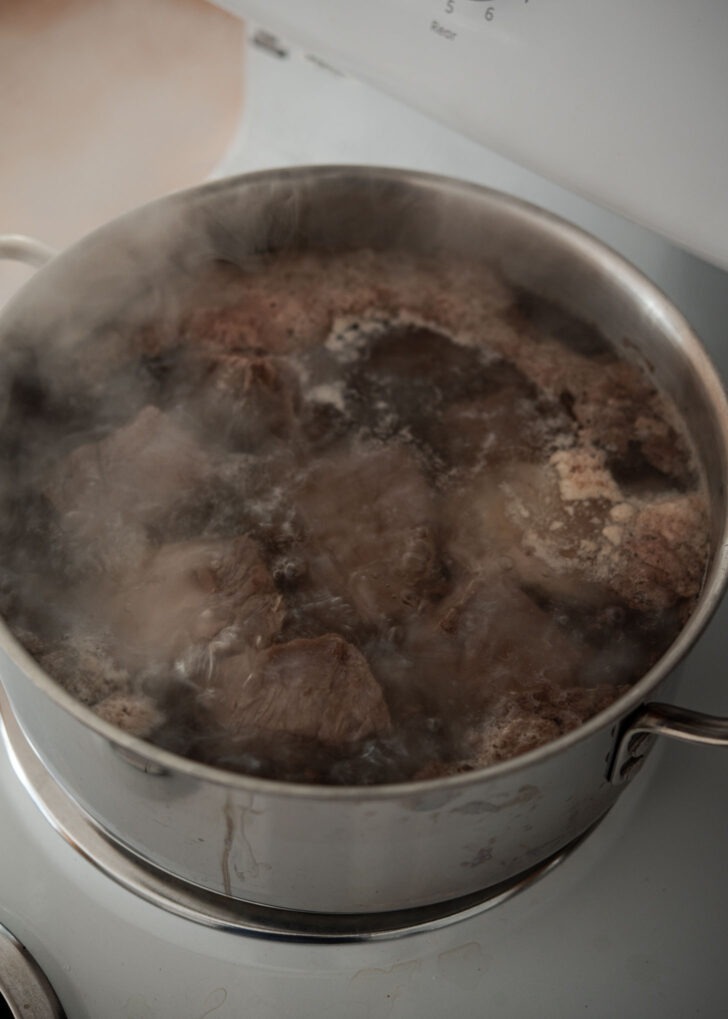
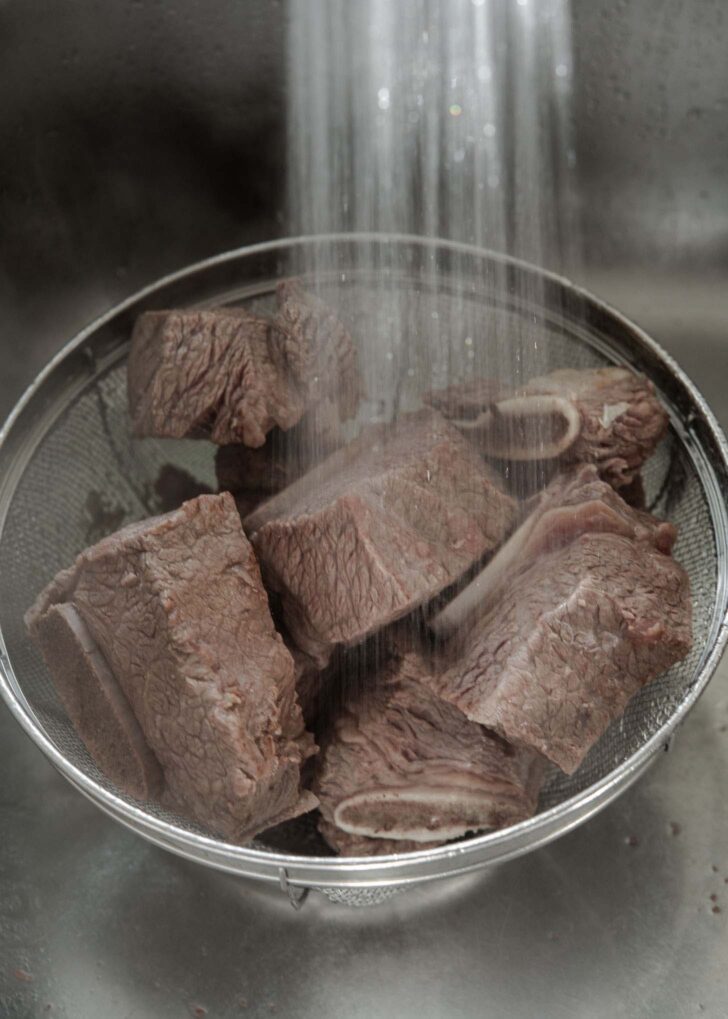
Parboil the ribs. Give the ribs a quick parboil to remove impurities. This keeps the broth clean. Once drained, rinse the ribs under running water to wash away any bone fragments.
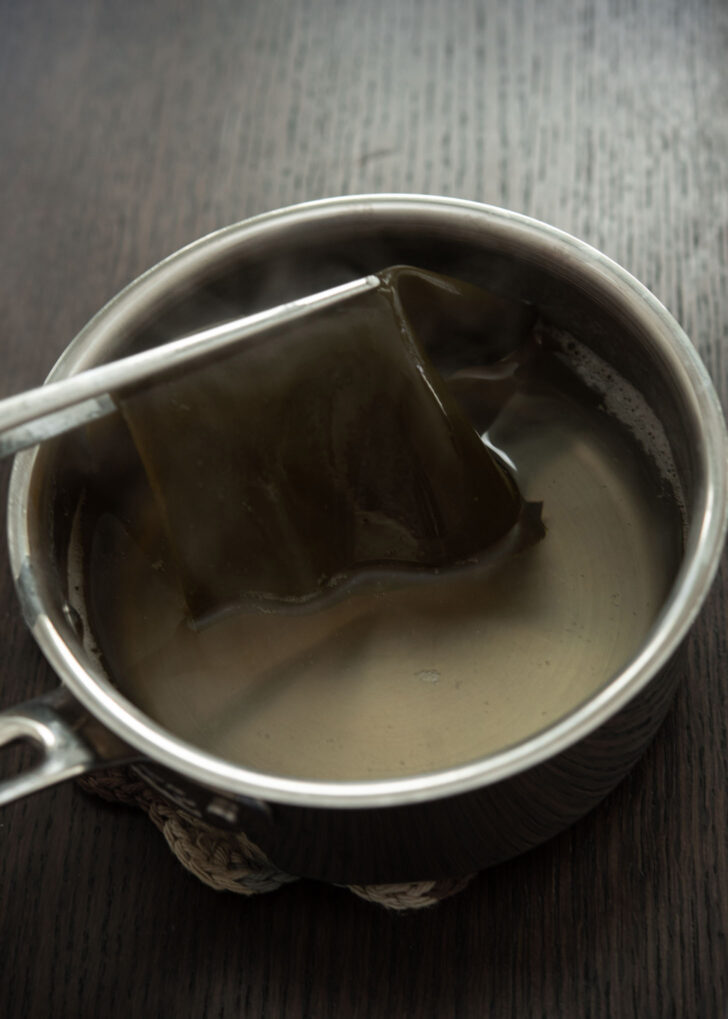
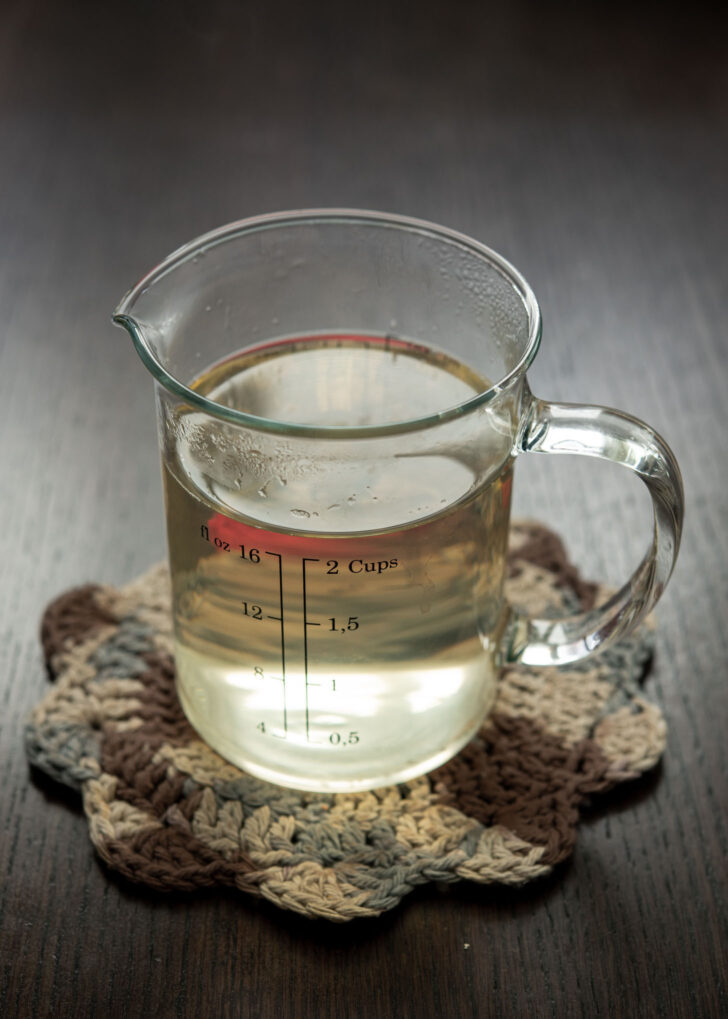
Make the kelp stock. While the ribs are parboiling, simmer a piece of dried kelp (dashima) in water for a few minutes. This quick stock adds a subtle but important layer of umami. I always prefer it over using plain water—it makes the final sauce much richer.
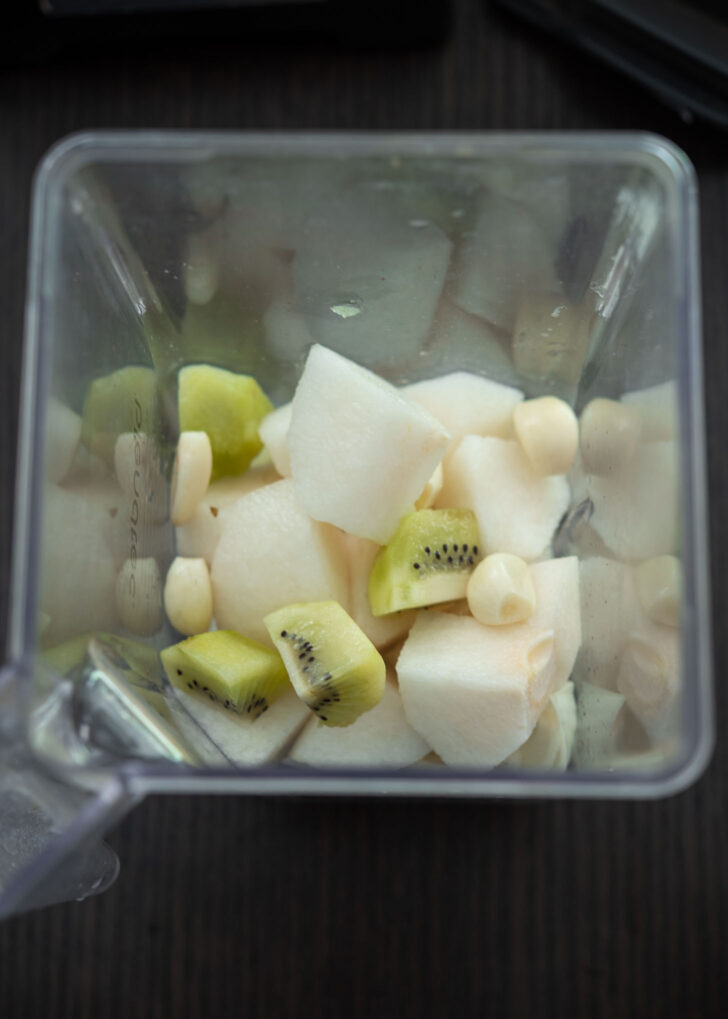
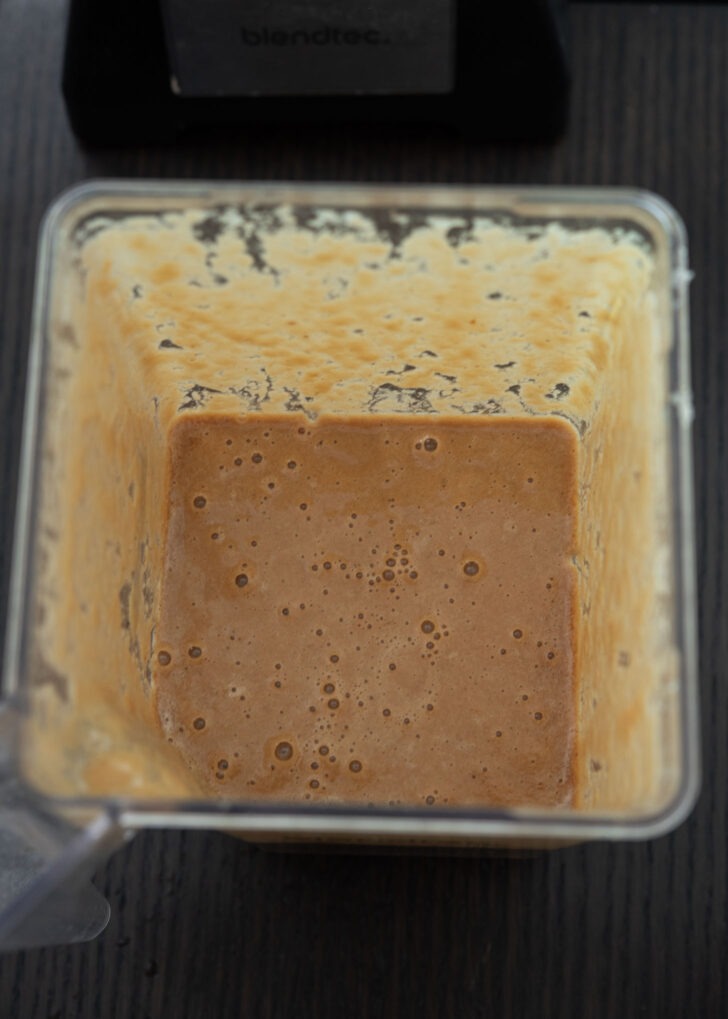
Blend the sauce. In a blender, combine aromatics and fruit: onion, pear, kiwi, garlic, soy sauce, and sugar. Add a splash of the kelp stock and blend until smooth. This mixture becomes the base of the braising sauce.
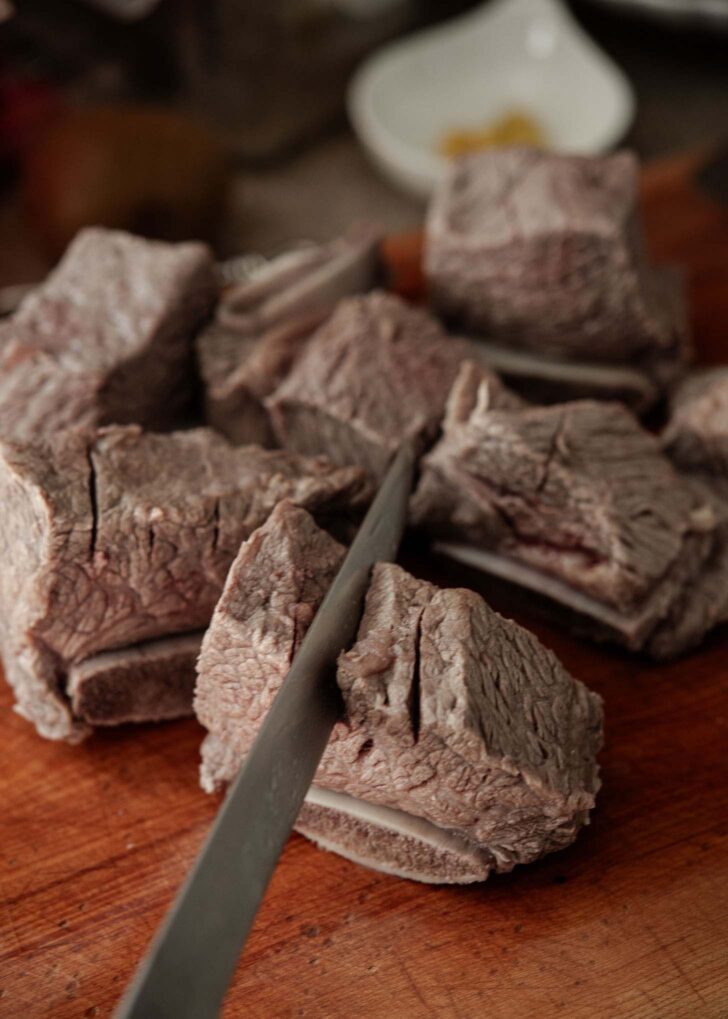
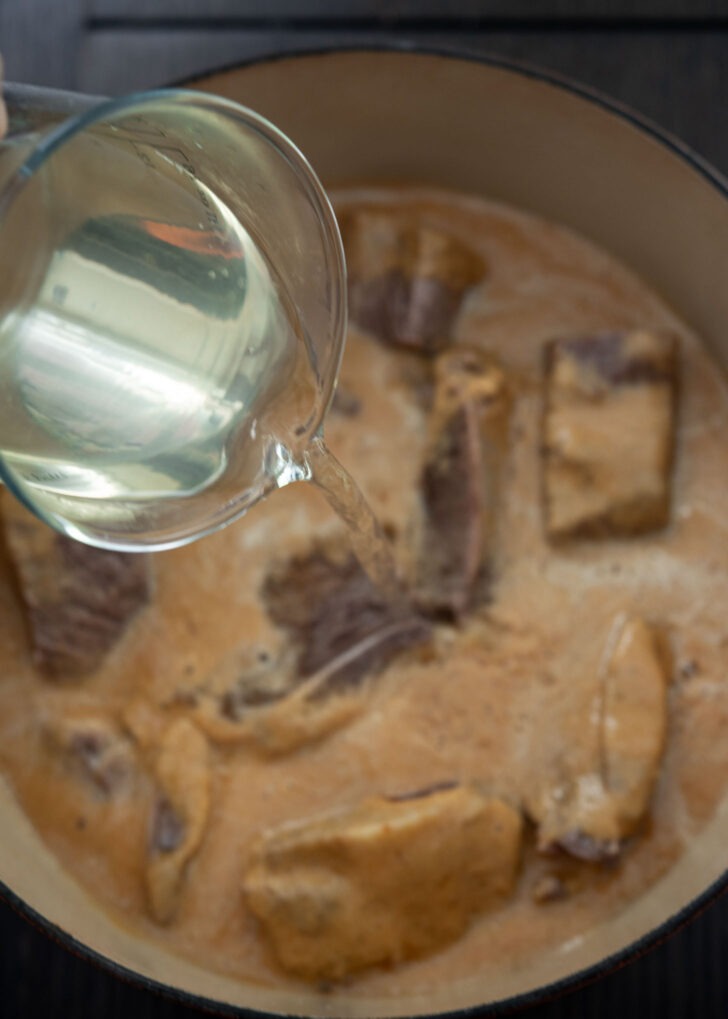
Combine ribs with the sauce. Score the cleaned ribs with shallow cuts to help it absorb flavor. Place them in a Dutch oven. Pour in the sauce along with more kelp stock, sesame oil, and ginger.
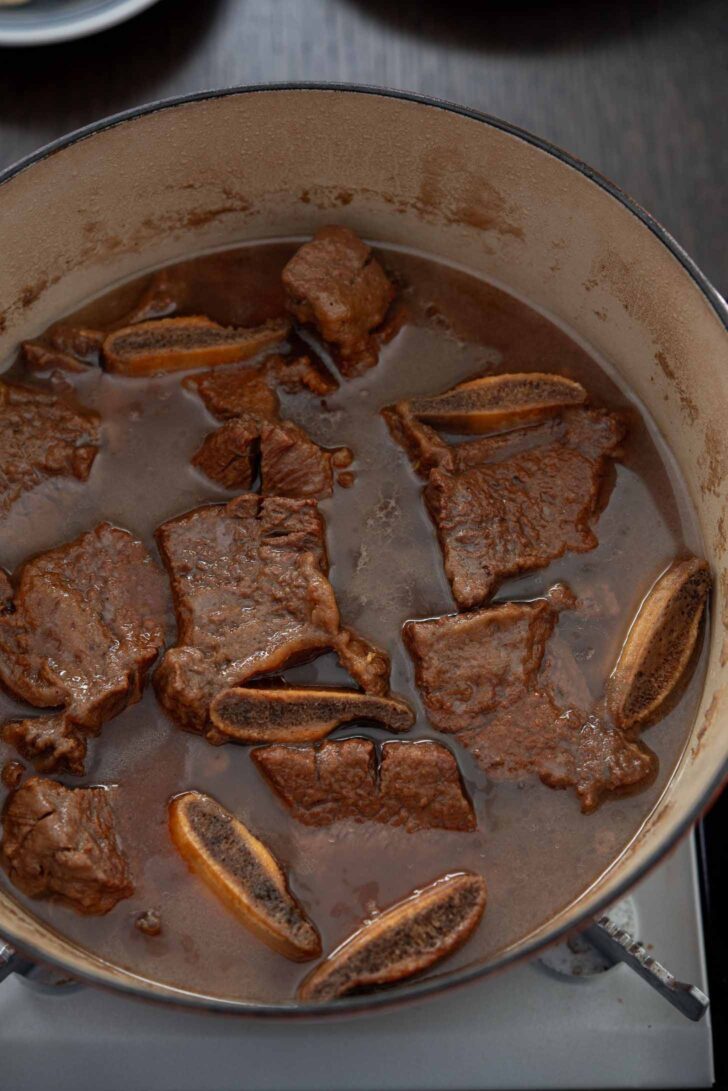
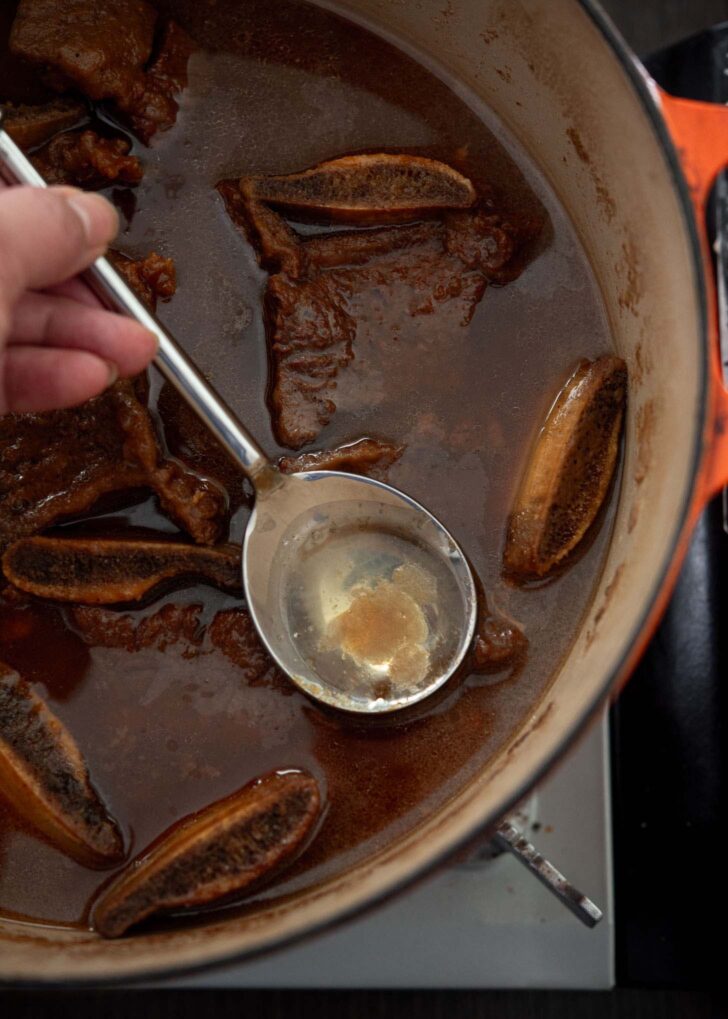
Start braising the ribs: Bring the pot to a gentle boil, then reduce the heat and let the ribs braise slowly until the meat turns tender and starts to pull away from the bone. As it cooks, skim off any excess fat on the surface to keep the sauce clean and rich.
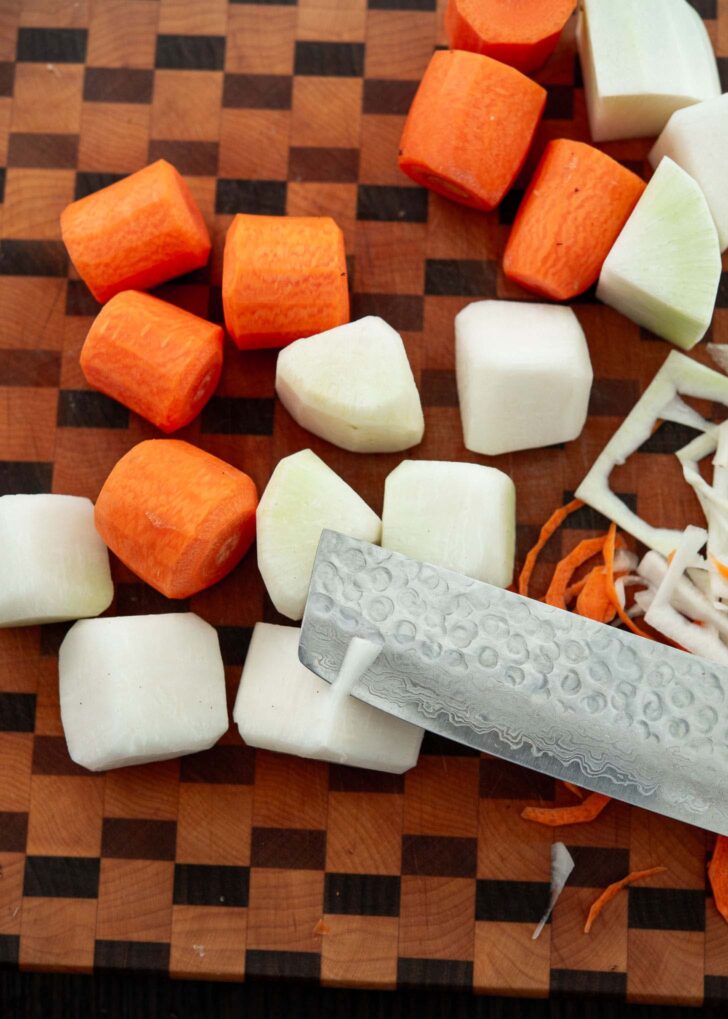
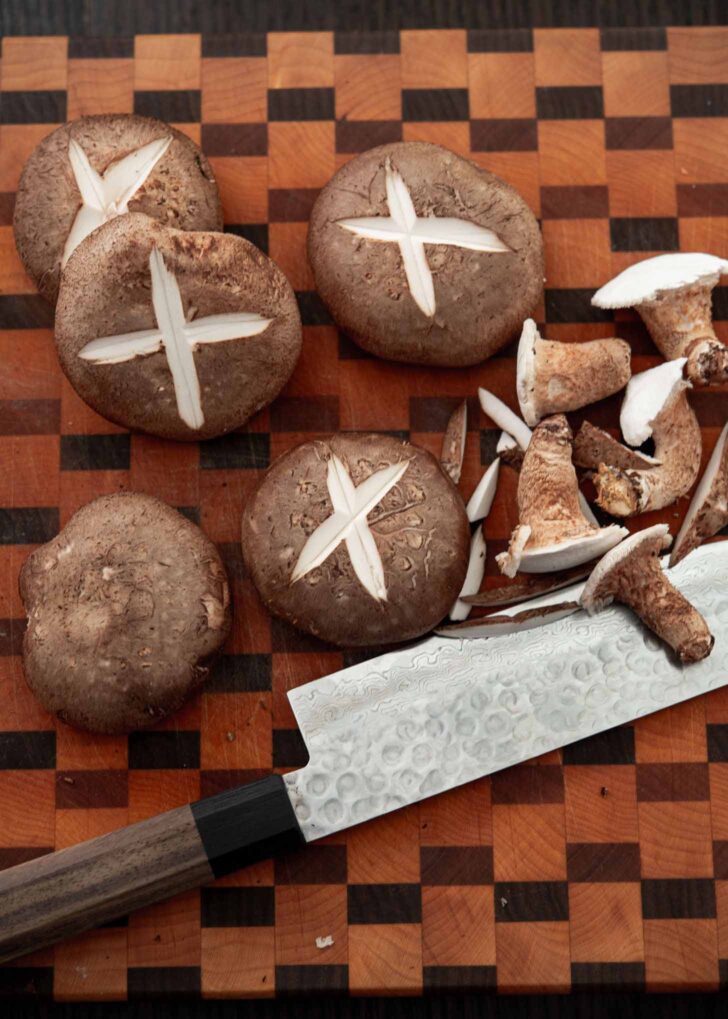
Optional step: shaping the vegetables. For a more polished presentation, you can round the edges of the carrot and radish pieces so they don’t break apart during braising. I also like to lightly score the tops of shiitake mushrooms with a cross pattern. It creates a decorative touch when you serve the dish.
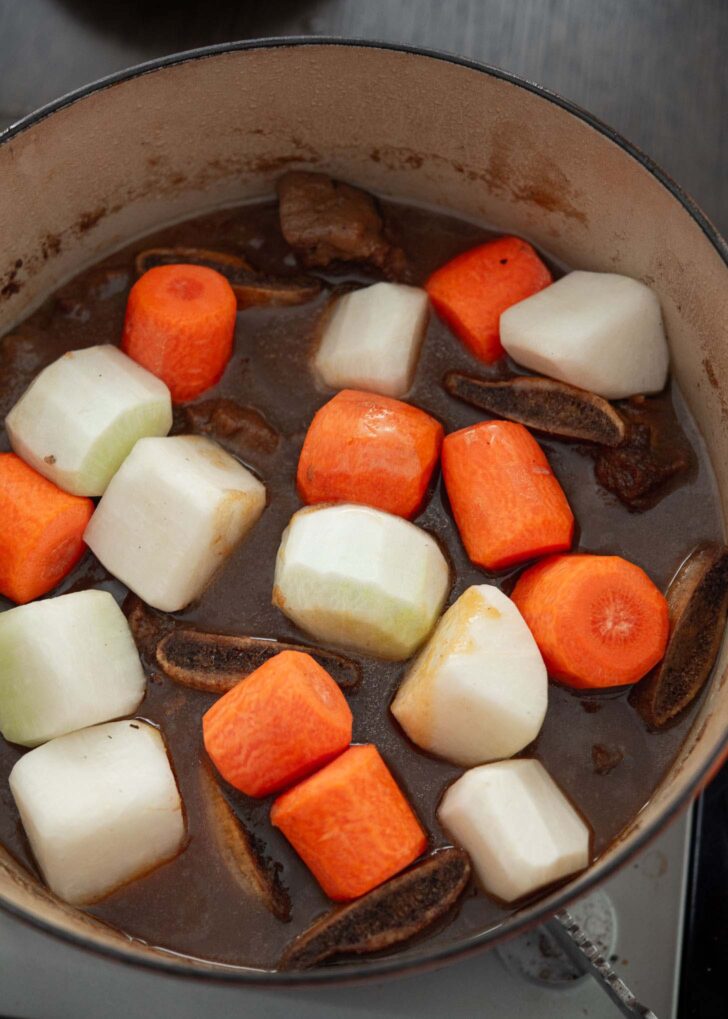
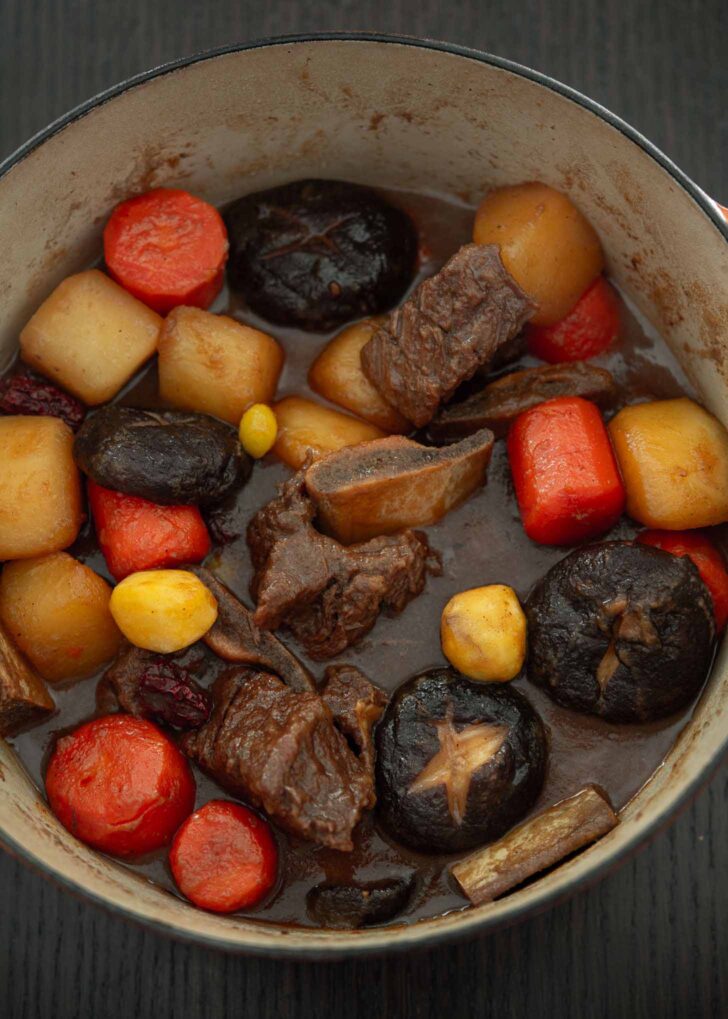
Add vegetables and festive touches. When the ribs are nearly done, add the carrots, radish, and mushrooms. These soak up the sauce and become just as flavorful as the meat. For holidays or special occasions, you can also include chestnuts, dried jujubes, or ginkgo nuts for extra texture and a festive feel.
Storage Tip: Galbi Jjim keeps up to 5 days in the fridge and the flavor actually improves after a day or two. If freezing, remove the vegetables first (they don’t thaw well), and store just the ribs with sauce for best texture.
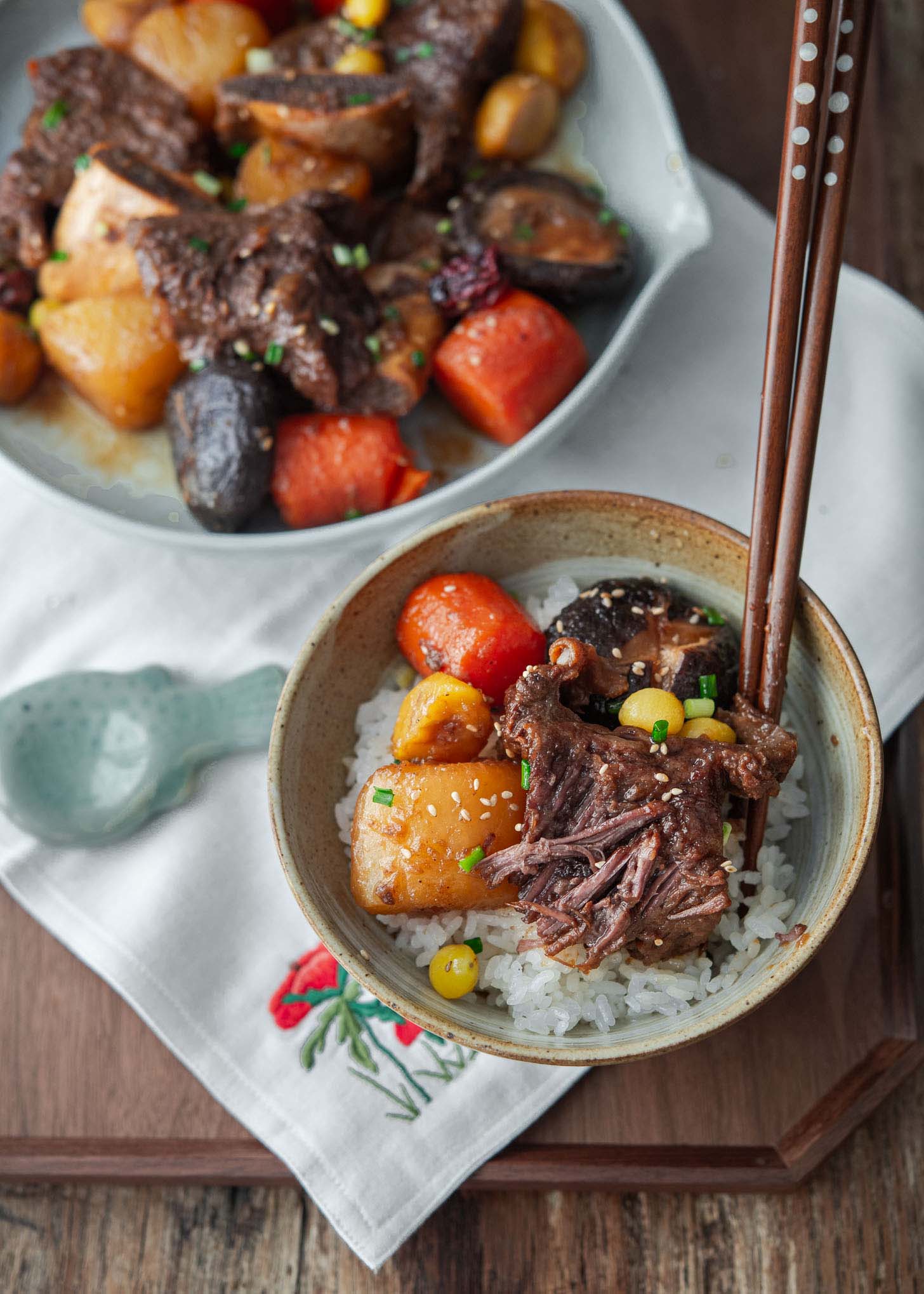
Love this recipe? Rate it and share your experience in the comments below! On Instagram? Tag me to showcase your creation. For more delicious recipes, subscribe to our newsletter!
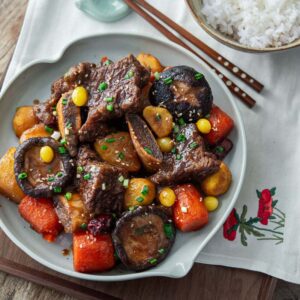
Best Galbi Jjim (Korean Braised Short Ribs)
Recipe Video
Ingredients
- 3-1/2 to 4 lbs (1.5-1.8 kg) beef short ribs, Korean style preferred
- 1/2 onion, diced
- 1/2 Korean pear, peeled, seeded, and diced
- 1/2 kiwi, peeled and diced
- 5 cloves garlic
- 1/2 cup (120 ml) soy sauce
- 3 tbsp (36 g) dark brown sugar
- 3 tbsp (45 ml) sweet rice wine (mirim)
- 2-1/2 cups (600 ml) sea kelp stock, divided
- 1 tsp (5 g) ginger paste
- 1 tbsp (15 ml) sesame oil
- 1 tsp (2 g) pepper
- 2 carrots, peeled and cut into big chunks
- 3/4 lb (340 g) Korean radish, peeled and cut into chunks
- 6 shiitake mushroom, see note for dried shiitake
For Sea Kelp Stock
- 1 large piece (10–15 g dried sea kelp (dashima)
- 4 cups (960 ml) water
Optional Add-Ins
- 5 dried jujube
- 8-10 chestnut, see note below
- 12 ginko nut, see note below
Equipment
Instructions
- Parboil and Prep the Ribs: Place the short ribs in a large pot of water and boil for about 10 minutes over medium-high heat. This removes impurities and excess fat. Drain and rinse the ribs under running water, scrubbing off any bone fragments. Cut a few shallow 1/2-inch slits into the meat so it absorbs flavor better during braising.
- Make the Sea Kelp Stock: While the ribs are boiling, simmer dried kelp (dashima) in 4 cups of water over medium-low heat for 5 minutes. Remove and discard the kelp. Measure out 2 1/2 cups of the stock to use in the recipe.
- Prepare the Braising Sauce: In a blender or food processor, combine onion, pear, kiwi, garlic, soy sauce, brown sugar, rice wine, and 1/2 cup of the kelp stock. Blend until smooth.
- Start Braising the Ribs: Place the parboiled ribs in a Dutch oven or heavy pot. Pour the blended sauce over them and add the remaining 2 cups of kelp stock, ginger paste, sesame oil, and pepper. Bring to a boil, then reduce the heat, cover, and simmer for about 1 1/2 hours. Skim off any fat from the surface as it cooks..
- Prep and Add the Vegetables: Trim the edges of the carrot and radish pieces if you like — this helps them hold their shape during braising. Score the tops of fresh shiitake mushrooms with a cross pattern for a decorative look. Add the carrots and radishes to the pot and continue simmering for 20–30 minutes, or until the vegetables are tender. If using rehydrated shiitake, add them at this stage.
- Finish with Festive Add-Ins: Stir in the fresh shiitake mushrooms, dried jujubes, chestnuts, and ginkgo nuts. Cook for another 10–15 minutes. Remove from heat and let the stew rest for 10 minutes so the flavors meld together.
- Serve: Garnish with chopped green onions and sesame seeds. Serve Galbi Jjim warm with rice and kimchi.

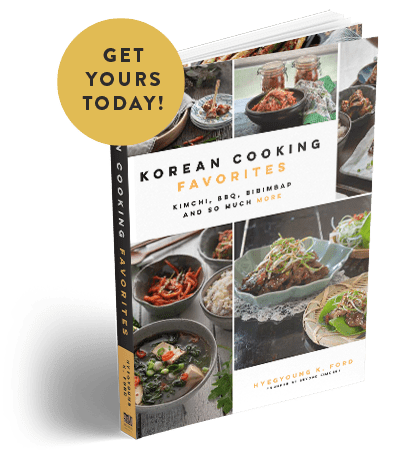
Hi Holly,
Could I use pork spare ribs instead of beef short ribs?
Yes, you can use pork ribs instead of beef short ribs with this recipe. I hope you enjoy it! Let me know how it turns out—thanks!
Fabulous. Tender beef, terrific braising sauce.
This was beyond good. I didn’t have all the ingredients, but I really don’t know that it harmed the dish too much. I’m in an Asian Market desert where we live so I ended up subbing out the ribs for just regular ribs, which were fine, but had some drawbacks. Also didn’t have access to any Korean produce, so had to make due with a red pear and a daikon radish. I did sub out the sea kelp stock with a dashi stock that I had made recently and needed to use up. I don’t have a good idea of what this dish is like with all the authentic ingredients, but even with what I used it was unreal good. Definitely a regular rotation dish and well worth the time to make. Thanks for sharing this recipe!
Hi , thanks for taking the time to reply! I do like this recipe, but the old on didn’t have mushrooms and ginkgo which I can’t obtain anywhere where I live.. I wish you also kept the old recipe
This is the same recipe, except I’ve added chestnuts and ginkgo as authentic garnishes. They are optional ingredients and omitting them won’t change the dish’s flavor. FYI, the older version also includes mushrooms.
Hello I remember u had a older recipe on this is that still available?
Hi Sandy! It is the same recipe, except I added dried jujube, ginkgo nuts, and chestnuts as garnishes. You can omit them from the recipe. Thank you for asking 🙂
Can this recipe be doubled?
Yes, you can double the recipe. Thanks!
Haii,
Which chesnuts did you use, water chesnut or tree chesnut ?
Thanks before
I used tree chestnut. You can find peeled chestnut in the freezer section of a Korean store.
This recipe is a keeper. I have tried making galbijim using few other recipes, but this one really easy to make and really hit the spot. I reduce the sugar a little bit, omit the kiwi, and used apple instead of korean pear. Thanks so much for the recipe! ^^
I make only this awesome dish everytime beef ribs blocks on sale (They are expensive in HI, around $13-14/lb regular price, but sale price is $8/lb). Only dish worth time & money spent like that 🙂
I make it sweet, savory and super spicy, that’s how I like it, with addition of wide sweet potato chewy noodles…. YUM!
Thx! One of my most reliable go-to internet recipes, ever: I’ve made this 3X now for different friends… I took a few extra steps here and there (roasting veg & garlic for a little more caramelized flavor, plus some umami add-in) but in general, stay pretty true to the formula. Have had rave reviews and normally restrained eaters go for seconds–even thirds!
Love short ribs! So comforting, particularly at this time of the year. This looks like an awesome recipe — tons of flavor. Great dish — thanks so much.
Hi
Thank you for this lovely recipe. Is there a substitute for kiwi? Thanks
You can use 1-2 rings of fresh or canned pineapple (1 for fresh or 2 for canned) instead. The acid and enzyme in these fruit will break down the muscle tissues of beef and tenderize.